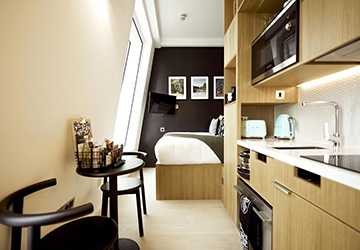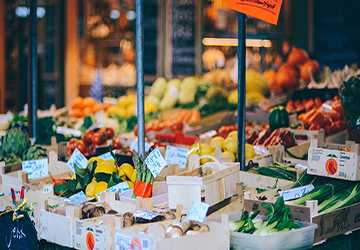Want to eat healthily while on the road without breaking your budget? Follow these guidelines like choosing budgeted accommodations with kitchens, dining at local restaurants, grocery shopping, picnicking, and more to spend less on food expenses and have healthy food on the road.

1. Choose a Place with a Kitchen with Access to the Dining Table
A straightforward method of controlling food costs on the road is to choose accommodations with a kitchen or a kitchenette, both of which allow you to cook your meals. Select budgeted home rentals, dormitories for students, Airbnb's, furnished apartments, or hotels with extra cook space. While only feasible for some destinations, having a kitchen during part of your trip can lead to significant savings in dining by preparing your food.
2. Travel to Local Markets and Grocery stores
Purchase food items that are commonplace and produce for your meal preparation by visiting local supermarkets and markets. Purchase local products and ingredients. Markets are characterized by deals on seasonal goods and pre-packaged food to heat up. Grocery shopping facilitates the inexpensive consumption of local food and provides greater control over the nutrition and ingredients. Stores' acquisitions can augment the consumption of food.
3. Investigation of Free-B Breakfast Options
Many hotels and hostels offer a complimentary breakfast, which helps reduce the dining cost, at least initially. When booking accommodations, include a complimentary breakfast item to take advantage of the included meal. Before visiting, essential continental breakfasts include juices, coffee, bread, and budget-friendly pastries. The quality and variety of choices are variable, but free breakfasts will help you to spend the day's first meal with care.
4. Happy Hours and Lunch Specials are Included in the Project Scope.
Check websites and social media outlets for promotional codes and walk around to uncover happy hour deals at restaurants and bars that are popular with travelers and locals. Lighter mid-day meals, late-night happy hours, and price-setting can all offer significant savings in dining. Apps and websites like TheFork also publish special deals at restaurants in your intended destination on a specific day and time. Set the times of meals around the lower prices of menus to maximize profits.
5. Attempt Street Food and Markets
Street vendors and markets serve tasty local food, often for a lower price than traditional restaurants. Attempt food courts, stands, night markets, and Chinatowns where locals consume. Look for local specialties and seafood that are fresh at coastal markets. Taste the diversity of genuine items by portioning them with travel partners. Street food tourism allows you to experience the destination at a cost.

6. Discounted Packages of Dinner
Consume smaller meals and maximize your savings by purchasing package deals and meal plans. City tourist cards, museum passes, and activity cards like the Paris Museum Pass have a special price of 2 for one at coffee shops. Sites like Groupon will publish fixed-price deals in top restaurants. Bundling allows you to taste superior dining for a fraction of the cost. Everyday fixed-price menus that provide value in exceptional restaurants.
7. Dine at BYOB's Establishments
Many restaurants facilitate bringing wine or beer to customers, which reduces the cost of drinks by about 20% - Research locations that are BYOB-friendly and have corkage fees that allow for external purchases of alcohol for a few dollars. The grocery store's wine and beer combination with BYOB restaurants reduces the total cost. Apps like Corkage promote restaurants that charge a corkage fee and have policies. BYOB is a budget-friendly alternative to dining at the restaurant.
8. Attempt to Free Samples
Benefit from the free food samples commonly available at markets, street festivals, distilleries, breweries and wineries. Calls facilitate testing produce, cheese, spices, and other items to assist with purchasing. Complimentary drinks and snacks often follow Winery, distillery, and brewery tours. Enjoy samples that are free of charge to enjoy your food and drink without having to pay.
9. Picnic in Recreation Areas and Parks
Combine affordable grocery products with a picnic lunch in parks, gardens, lakes and natural areas. Dinner at the open table is much less expensive than dinner tables. Bring your bunk, snacks, food, drink, and other items that can be carried around. Some reserves provide firewood for later use in the evening. Getting outside offers scenic views that improve your dining experience in a thrifty traveler style.
Conclusion
I'm eating healthily while traveling involves planning. Supplementary breakfasts, happy hours, tasting sessions, markets, grocery stores, kitchen access, street food, and picnics significantly affect the reduction of dining expenses. Look for deals, cook yourself, and explore the local menu to eat well without overspending. Enjoying the local cuisine is a part of the cultural experience.